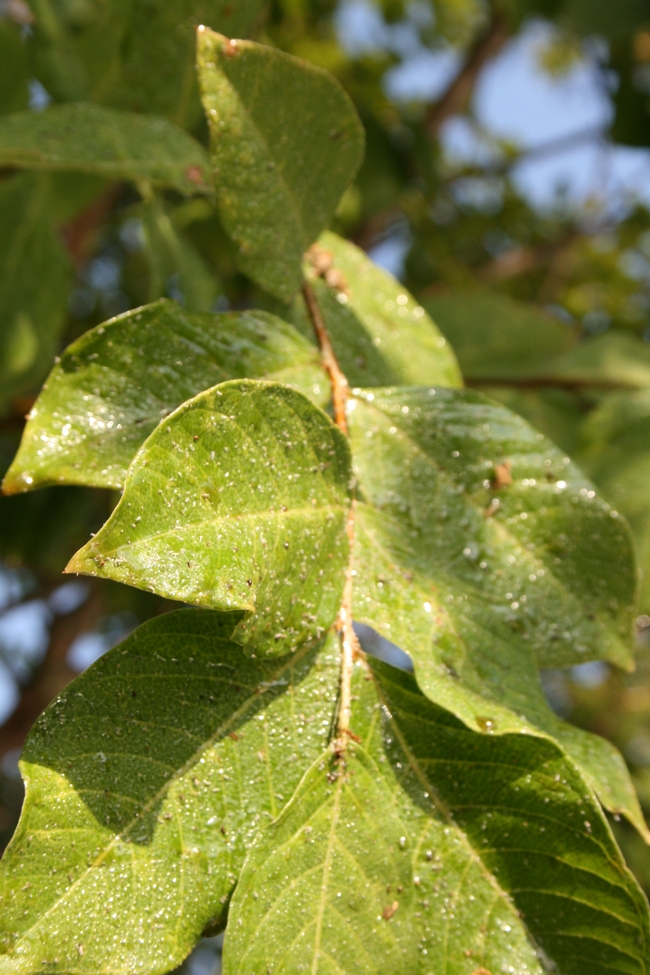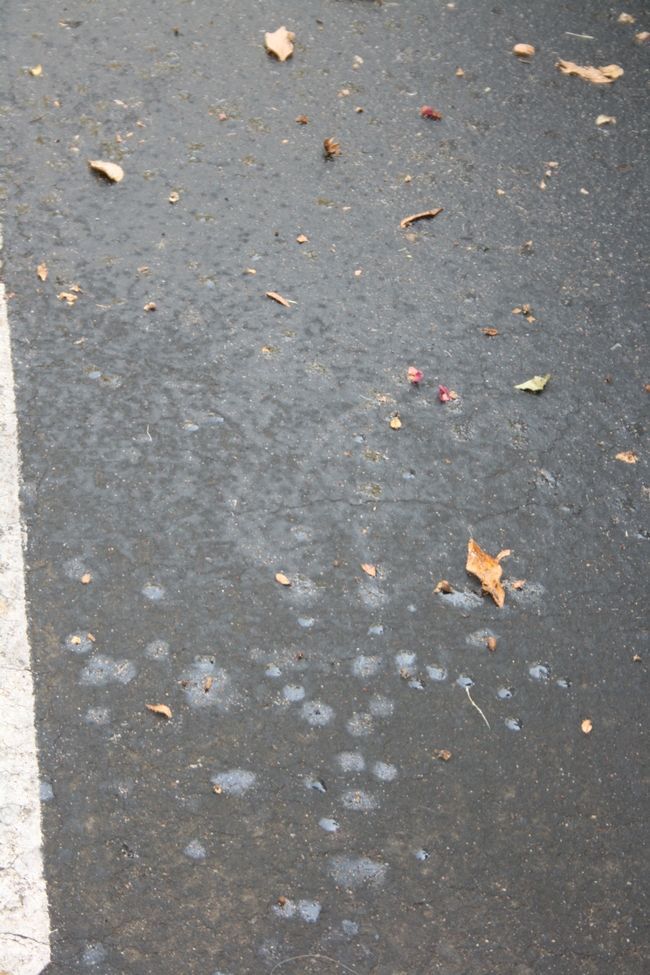
We've written about quite a few of the insects that produce honeydew in our blog, so here is a list of the possible culprits that may be causing the mess this time of year:
Aphids
The hackberry woolly aphid is a major pest on hackberry trees. The aphid's honeydew drips all over, leaving behind a sticky mess. Read more about this pest in What's that Sticky Stuff on my Car?
Many other types of aphids suck plant juices and create honeydew on other plants. Visit the UC IPM Pest Notes: Aphids to read more about them, their host plants, damage, and management.
Asian Citrus Psyllid and other psyllids
Psyllids are another pest that produce honeydew, and there is one psyllid in particular that you may have heard about: Asian citrus psyllid (ACP). ACP is infamous for its ability to carry huanglongbing, an incurable disease that kills citrus. Learn how to check your plants for this pest, read the post Invasive Spotlight: Asian citrus psyllid and huanglongbing disease.
Leafhoppers
Read about these small, wedge-shaped pests that hop around and feeds on a variety of plants in our blog article, Leafhoppers on plants.
Mealybugs
This pest is often mistaken for cottony cushion scale, woolly aphids, and even soft scales and whiteflies. They can be found outside in the landscape, but also indoors on houseplants. Learn more about this pest by reading the post New Mealybugs Pest Note!
Scale
Scales can be difficult to identify, since sometimes they may not resemble insects. Once they reach the immobile adult stage, they look like bumps on leaves and stems. The presence of sticky honeydew and sooty mold can be a clue that something is amiss, but this does not occur with every kind of scale. Read the post Scale Insects: Recognizing and Managing for help.
Whiteflies
This tiny pest is fairly easy to identify since it is white and flies around when disturbed. You can find whiteflies on a wide range of host plants, usually living on the underside of leaves. Our post Whiteflies Resource-Newly Updated! has more information.
Ants
Along with the pest, honeydew, and sooty mold, you may also notice an abundance of ants climbing all over your plants. Ants don't produce honeydew, but they are attracted to it. There is an easy solution to this problem you can learn more in the video we discussed in the post Using a Sticky Barrier to Keep Ants Out of Trees.